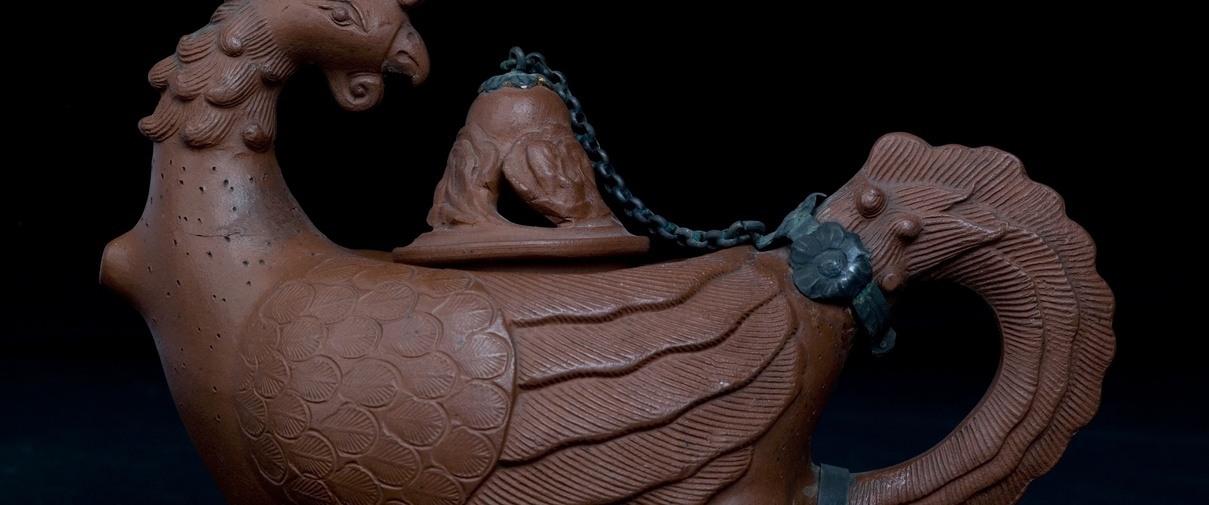Phoenix teapot
A phoenix of purple earth
In China, people have been drinking tea for thousands of years. However, the Chinese did not always prepare their tea in the way we know it. Over the centuries, the preparation of tea went through a long development. Until finally the teapot came on the scene.
In the early days of tea, the Chinese prepared the drink by steaming the tea leaves, together with aromatic spices such as ginger. A little later, they processed the leaves into so-called tea tiles, which were grated over a bowl of boiling water. During the Song Dynasty (960 - 1279), people switched to using green tea powder. The hot water went directly into the cup, after which the powder was beaten through it with a bamboo whisk. But this method did not last long either. Buddhist monks did take the method to Japan, where it is still used today during the chanoyu, the ritual tea ceremony.
In the meantime, a new way of making tea had emerged in China. During the Ming Dynasty (1368 - 1644), the tea leaves were steeped in hot water. A special pot was needed for this: the teapot. The most popular teapots in China were – and still are – made in Yixing in the south of China. For these teapots, a type of clay called ‘purple earth’ is used. Due to the high iron content, the baked clay gets a colour that varies from ochre to purple-brown. The clay is mined in the area around Yixing. It is the only place where this clay is found and that makes the reddish-brown pots very characteristic.
One of the reasons for the popularity of Yixing teapots is the great variety of models. For example, during the Ming Dynasty, teapots were made to suit the taste of the educated Chinese elite. These pots were generally very small and undecorated. In the West, however, these simple teapots were considered boring. People wanted larger ones and imaginative shapes. So when drinking tea became popular in the West at the end of the seventeenth century – especially in the Netherlands and England – the Yixing potters catered to the taste of their new Western clientele.
